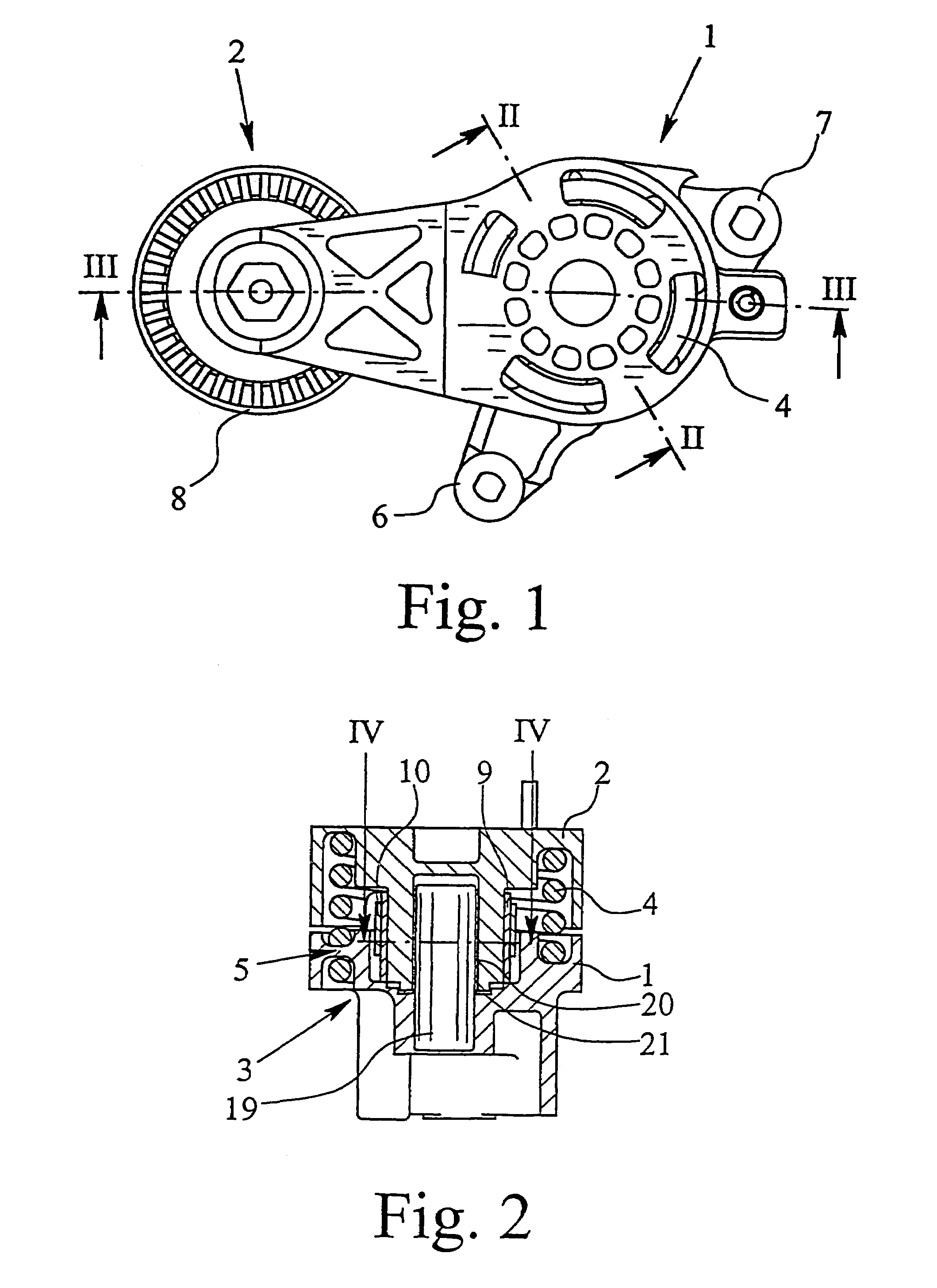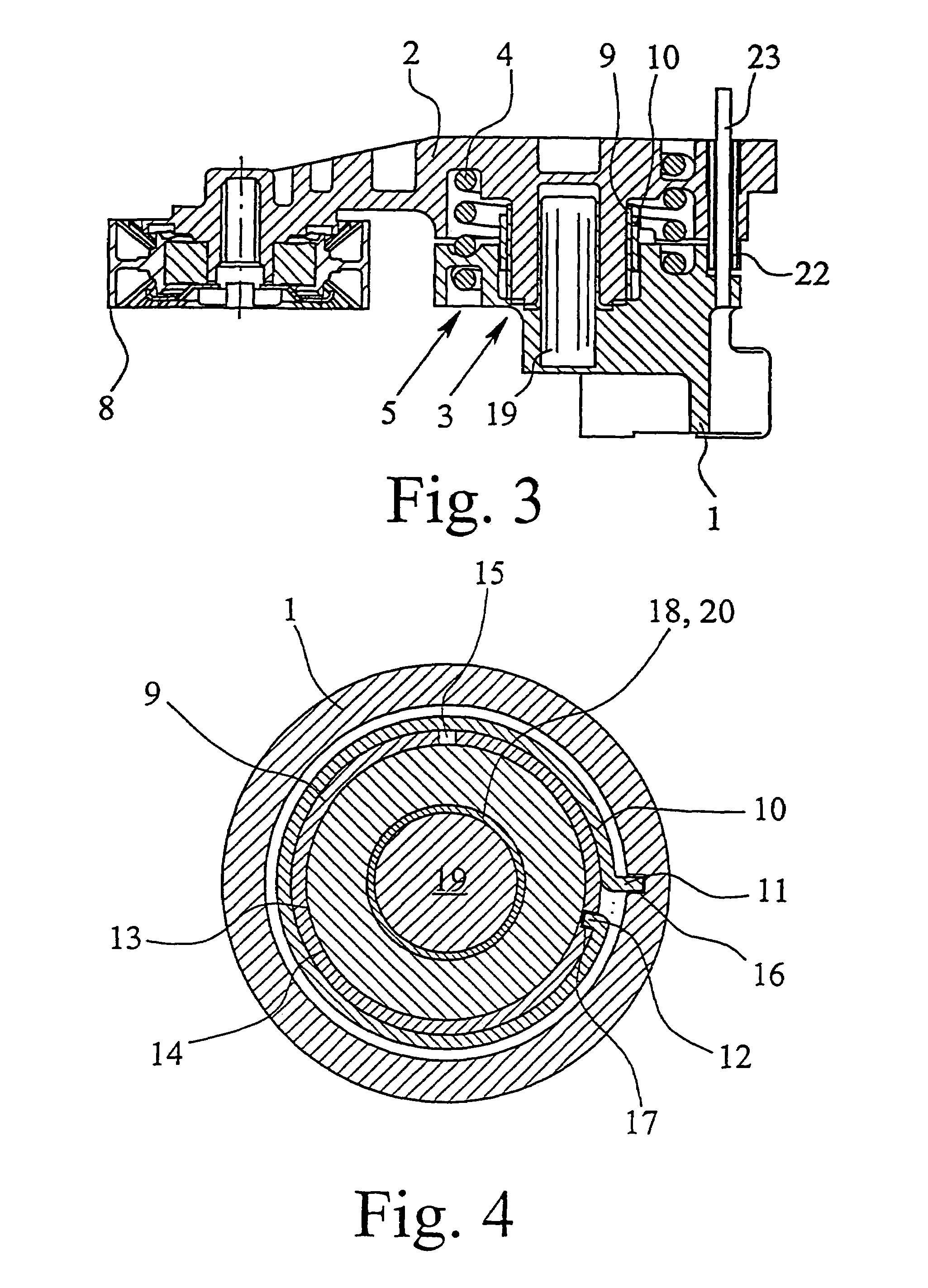Belt tensioning device
a technology of tensioning device and belt, which is applied in the direction of belt/chain/gearing, mechanical equipment, gearing, etc., can solve the problems of needing considerable additional means and damage, and achieve the effect of reducing production costs and simplifying design and production technology
- Summary
- Abstract
- Description
- Claims
- Application Information
AI Technical Summary
Benefits of technology
Problems solved by technology
Method used
Image
Examples
Embodiment Construction
[0027]While the present invention is described with respect to a belt tensioning device, the present invention may be adapted and utilized for tensioning other traction mechanisms. Thus, although the following components are described for a constructed embodiment, these specific components are included as examples and are not meant to be limiting.
[0028]The Figures show a tensioning device for traction means, namely a belt tensioning device. The belt tensioning device comprises a receiving and mounting housing 1, a roller carrier 2 which is pivotably connected to the receiving and mounting housing 1, a bearing 3 which radially and axially supports the roller carrier 2 relative to the receiving and mounting housing 1, a spring which applies the tensioning force and is arranged between the roller carrier 2 and the receiving and mounting housing 1, which spring, in the embodiment shown, is a helical spring 4 in the form of a leg spring, as well as a damping device 5.
[0029]As shown in FI...
PUM
 Login to View More
Login to View More Abstract
Description
Claims
Application Information
 Login to View More
Login to View More - R&D
- Intellectual Property
- Life Sciences
- Materials
- Tech Scout
- Unparalleled Data Quality
- Higher Quality Content
- 60% Fewer Hallucinations
Browse by: Latest US Patents, China's latest patents, Technical Efficacy Thesaurus, Application Domain, Technology Topic, Popular Technical Reports.
© 2025 PatSnap. All rights reserved.Legal|Privacy policy|Modern Slavery Act Transparency Statement|Sitemap|About US| Contact US: help@patsnap.com



